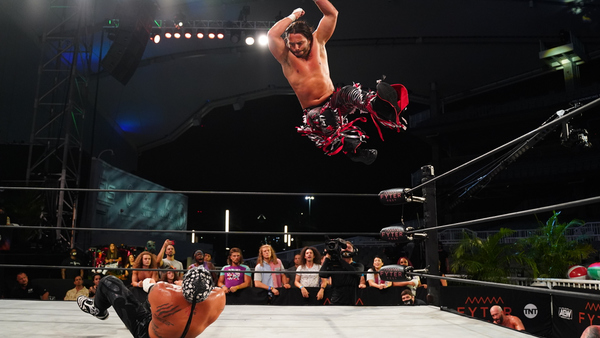How AEW Has Actually Answered Its Biggest Complaint

WWE is a company that, historically, patterns its matches to the point of near-total homogeneity and has very rarely offered undiluted genre offerings. There is a marked difference, to use just two examples of several, between the styles Shinsuke Nakamura and Ricochet worked in New Japan Pro Wrestling to their current promotions.
In AEW, Rey Fénix and Penta El Zero M do exceptional, authentic, unimpeded lucha things. Cody and Chris Jericho operate in the traditional U.S. TV wrestling vein. Jon Moxley is both gripping brawler and grappling strategist. Mr. Brodie Lee and Lance Archer work as modern monsters; capable of spectacular moments, they mostly use their size because what they can do with it hurts, not because it's cooler when they do cool stuff they should not, by rights, be able to do.
The idea is to attract several groups of fans drawn to several different disciplines. This something-for-everybody philosophy stands in complete contrast to WWE's everything-for-one-man vision.
In a bid to be the alternative.
What's also irritating about this bad take is that it is, simply, bad. AEW - easing away now from the breezy quasi-canon embraced in May to strike the immediate post-lockdown tone - has in fact created a sporting framework around which to book its product. Those aforementioned stylistic disciplines collide in AEW because that is what happens in - yes - real sports. How many times, in real sports, have you heard a manager have a right whinge when the opposing team plays in a way designed to suppress their opponent? Countless glamorous continental managers, proponents of sexy, free-flowing football, have complained when sides park 11 men behind the ball and hoof it to the big lad up top.
CONT'D...(2 of 6)